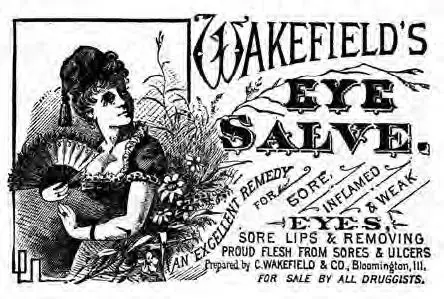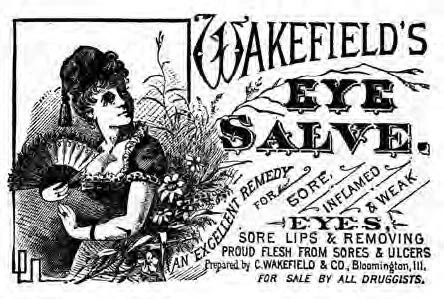Search
Looking for something in particular? Search for it here.
Looking for something in particular? Search for it here.
Because of railroad shipping, manufacturers like Wakefield could sell their products throughout the nation.
Featuring:
Cyrenius Wakefield, (1815 – 1885), inventor & factory owner
Benjamin F. Reeve, (1856 – 1925), newspaper printer
Cyrenius Wakefield (1815-1885) took over the patent medicine factory he had helped his recently deceased brother Dr. Zera Wakefield establish in 1846. Cyrenius turned Wakefield’s into a highly successful business that utilized traveling sales agents and free almanacs to sell Wakefield’s Blackberry Balsam and other remedies. Because of railroad shipping, manufacturers like Wakefield could sell their products throughout the nation.
Cyrenius chose not to purchase his own presses. But after he passed management of the factory to his son Oscar in 1871, presses were purchased and printers were hired.
In 1878 Oscar employed 40 workers at the medicine factory. He also employed seasonal workers to mail Wakefield’s annual almanac, as well as selling agents who traveled the region selling Wakefield’s medicines.
In the 1880s annual distribution of Wakefield’s almanac reached 1.5 million households. The large number of orders received more than offset the cost of printing and mailing the almanacs.

Wakefield's Eye Salve claimed to be "an excellent remedy for sore, inflamed, and weak eyes, sore lips, and removing proud flesh from sores and ulcers."

The 1906 Pure Food & Drug Act put most patent medicine companies out of business. But Wakefield’s blackberry bark and root-based balsam had some medicinal qualities for diarrhea. Until the mid-1990s, Wakefield’s Blackberry Balsam could still be purchased from a New York based company.
Benjamin F. Reeve (1856-1925) was an accomplished printer who worked for Bloomington’s Pantagraph for 12 years. But in 1892 he was convinced to leave and manage the printing department at Wakefield’s medicine factory.
It was a new job, a new boss, and a new environment. But the work was not so different from the jobs Ben did at the newspaper. He supervised the work of printing almanacs, medicine bottle labels, and medicine boxes, as well as order forms.
Ben hired Edward J. Tohill (1877-1918) to work as a press feeder the same year. Ed worked his way up to pressman, but in 1898 took a job in Chicago.
That same year Ben, who missed newspaper work, moved to Michigan to work as a newspaperman.